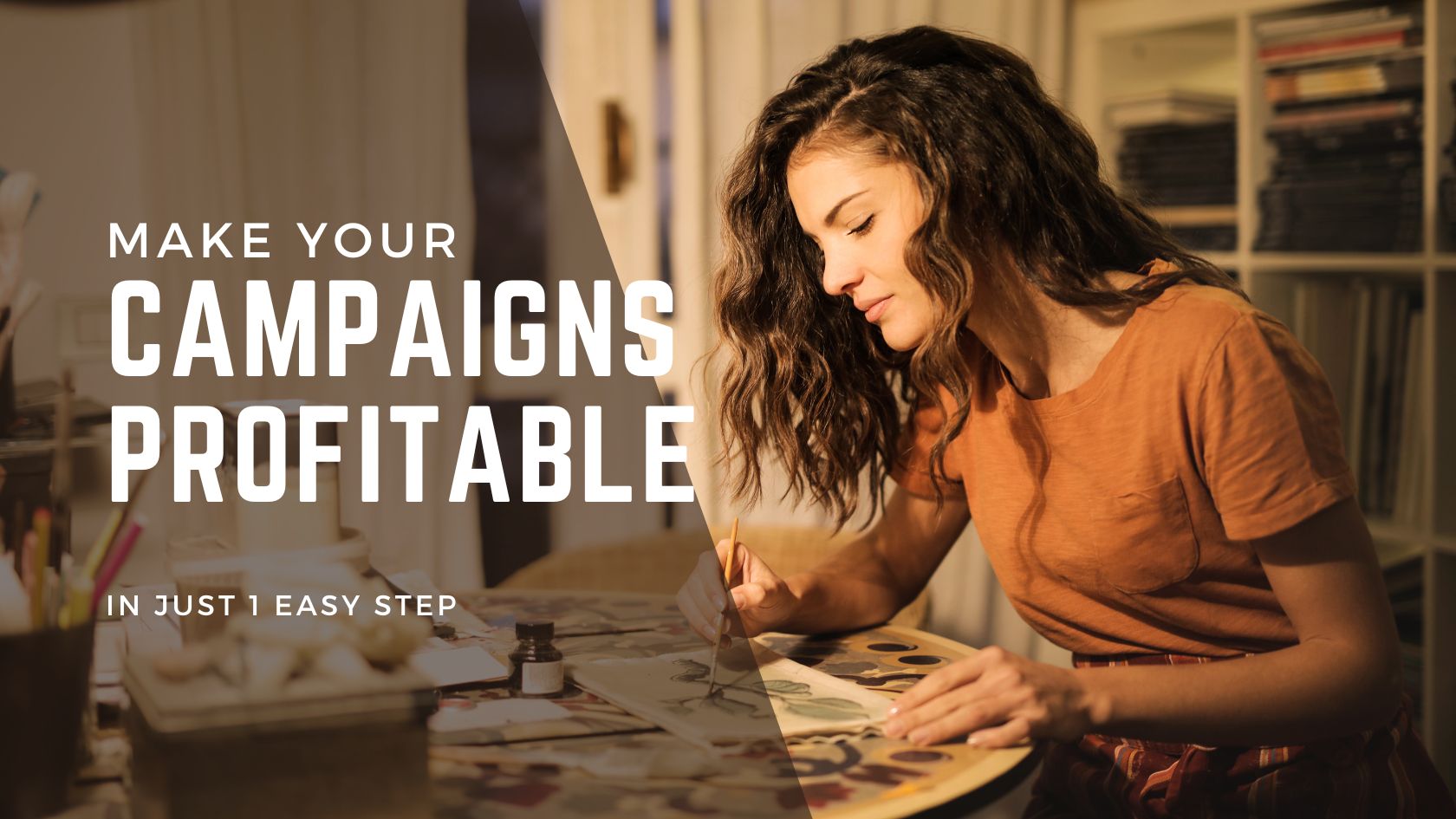As a business owner, CMO or advertising agency, you’re always on the hunt for those gold-making tweaks to our inbound traffic that skyrockets conversions and sales revenue. Facebook is a fantastic tool that not enough businesses use correctly to market their products or services.
Have you ever just boosted a post, or taken a step further and created one campaign targeting people in your general area, and been frustrated when results were poor?
Don’t worry, we have all been there. And there is a solution.
After spending hundreds of thousands of $$$ on client and personal campaigns, we have learnt a thing or two about getting the best bang for your buck out of your Facebook and Instagram ad campaigns.
Our client campaigns are crushing it in eCommerce, with a general Return On AdSpend (ROAS) of over 6x.
And in lead generation, the story is the same, with an average cost-per-lead of less than 10 euro, even for $25,000 products.
What could you do with an extra 100 qualified sales calls per month, with leads that fully know they have a problem, and that you can solve it?
Without further ado, let’s get into the 7 Impressive Ways To Increase Facebook Ads Conversions.
We help brands connect with customers. Discover our AutoLoop Growth System today.
Step 1 – Optimise Your Audiences With The Facebook Pixel
Why the Facebook Pixel is a your best friend…
It still shocks me how many businesses still don’t use the Facebook Pixel correctly.
Surprisingly, a lot of businesses (and even some websites used by those self-proclaimed ad “experts”) do not even have one installed at all.
Yes, shocking isn’t it!
It’s an absolutely vital (and free) tool that you need to be thinking about how to utilise when creating profitable Facebook Ad campaigns.
What is the Facebook Pixel?
For those of you who haven’t heard of the Facebook Pixel or don’t know exactly how it works; physically it is a piece of code that you install on your website.
But it has several functions that are super important.
It tracks users on your website, such as:
o What pages they visit
o Frequency of page visits
o Time spent on website
o Valuable actions carried out by visitors, such as Add To Cart or Purchase
But probably the most important function of the Pixel is not really thought of or articulated often in literature.
It stores data, based on individual users, for up to 180 days.
You can then use this data to optimize your ads to have the best outcomes possible (of your choosing) and later on (with enough data) you can create Look-Alike-Audiences (LLAs).
LLAs are often the most profitable type of audience that you can use to target your ads towards. It means that your Pixel has enough data, obtained from similar valuable actions on your website, for it to identify people similar to those valuable customers. It needs a certain number of similar actions to have been taken, in order to be statistically significant and to optimize your ads correctly.
Basically, an LLA is Facebook’s ad system finding optimal audiences for you, for your desired objective.
Just to clarify a little further, LLAs are a group of people who are most likely to carry out the Conversion that you set, such as:
– Most likely to View Content
– Most likely to Add To Cart (very valuable)
– Most likely to Purchase (most valuable)
Unfortunately you cannot just create an LLA for any particular conversion objective.
You must populate your Pixel with data (and often you need a certain amount of actions per month, such as 100 Add To Cart conversions) in order to create an LLA, which is the optimal audience for that conversion.
You’ll need are certain amount of Page Views to create an LLA for Page Views.
Or 100 Add To Carts to create an AddToCart LLA.
Or 100 Purchases in order to create a Purchase LLA.
You need to find ways of building up those actions on your website, and when you have the desired number, you can create the LLA.
Sounds complicated, right?
It really isn’t, once you understand what an LLA is and treat it like it is the top rung of the audience ladder.
It is the best one to shoot for, but you’ve got to up a few steps to get to the top.
But it also has one other awesome use.
You can use it to re-target users on your website.
For example it remembers those who Add To Cart but didn’t buy. With the Pixel, you can create ad campaigns specifically to target these “warm” users.
Re-targeting groups of people immediately, up until 3 days after they visited your website, often brings a really profitable Return On Investment (ROI).
It is pretty awesome. We will discuss re-targeting ads in another blog!
Step 2 – Exclude Past Users On Cold Campaigns
A Custom Audience is a group of people who have interacted with your Facebook page, Instagram page, or website in a particular way. For example, an Add To Cart retargeting audience (for people who have Add To Cart in 30 days) is a Custom Audience.
Custom Audiences are a fantastic way to niche down your targeting, based upon different levels of user interest within your marketing funnel. You can also use Custom Audiences to exclude people who have already interacted with your brand in a particular manner.
For example, in your Cold Campaigns (so people who have never interacted with you before) we ensure they are truly “cold” by creating a Custom Audience of everyone who has engaged with your brand or been on your website in the past 180 days, and use this audience in the exclusion section of your adset.
But to get a Custom Audience, you will need to have data (which you will not have if you are just starting marketing) or have only just installed your Facebook Pixel.
Even if you do not have this data yet, a good rule of thumb is to create the Custom Audience anyway and use them in your exclusion section of your adset from the beginning.
Step 3 – Segment Landing Pages For Specific Products Or Services And Drive Traffic Interested In That Only
Do you offer many services or products? Great! So have you all grouped them into the same page and keep throwing ALL of your website visitors there from your ads? Do you have a high bounce rate and a low conversion rate?
Thought so.
A landing page is the first part of your website that a new user ends up on after clicking an ad or a specific campaign click-through link.
As humans, we are predominantly visual beings. This means that a new users’ first interaction with your brand’s website may well determine their life-long impression.
Brands often spend thousands of dollars in driving traffic to sub-par websites, resulting in higher bounce-rates and far less conversions than they were capable of.
So, a well-structured ecommerce landing page, designed for the specific user, product and campaign, is important to nail down (but is often not considered).
Bigcommerce.com (a tool I highly suggest you explore) establishes a great insight into what landing pages should be doing for you:
“Landing pages represent the tool through which brands can adapt to the user in question, creating relevant and positive-impression making experiences for each of the individuals engaging with your brand.”
And importantly for you, a landing page may determine if a user is more or less likely to buy your product.
People will come up with a million and one reasons NOT to buy something, so it’s your responsibility to answer each of these potential questions or concerns on your landing page.
When creating your landing pages, it’s important to consider what stage your audience is at, in your funnel.
Step 4 – Use Campaign Budget Optimization!
This is a great way of making Facebook’s machine learning system work for you and getting the most out of your campaigns.
CBO works to distribute your budget across audiences (adsets) and ads, so that you get the most value from your budget.
How does it work in practice?
Let’s say that you have an audience that converts higher between 9-11am and one that converts better in the evening. CBO ai will learn and distribute budget to favour the performing adsets during those higher-performing times (so you dont have to do this manually).
A pro-tip is to make sure your audiences are of the same size so that your budget is not weirdly favoured to the larger audience. Aim for audiences of ~1 million for best results.
Step 5 – Set Up Segmented Retargeting Campaigns by time, action and messaging
Always Retarget. Retargeting is the moneymaker with often much, much higher conversion rates than Cold Campaigns.
You can retarget by creating custom audiences of people who have carried our specific actions with your brand (website/Facebook page/Instagram page) and segment by time.
Each retargeting audience should have different messaging!
A rule of thumb in eCommerce retargeting campaigns is to do [3 Days Engagement Retargeting] / [7 Days Web Traffic Retargeting] / [14 Days Add To Cart Retargeting]…but depending on your budget you can go more or less time-specific or target more or less actions.
We retarget extensively in our clients’ AutoLoop campaigns.



